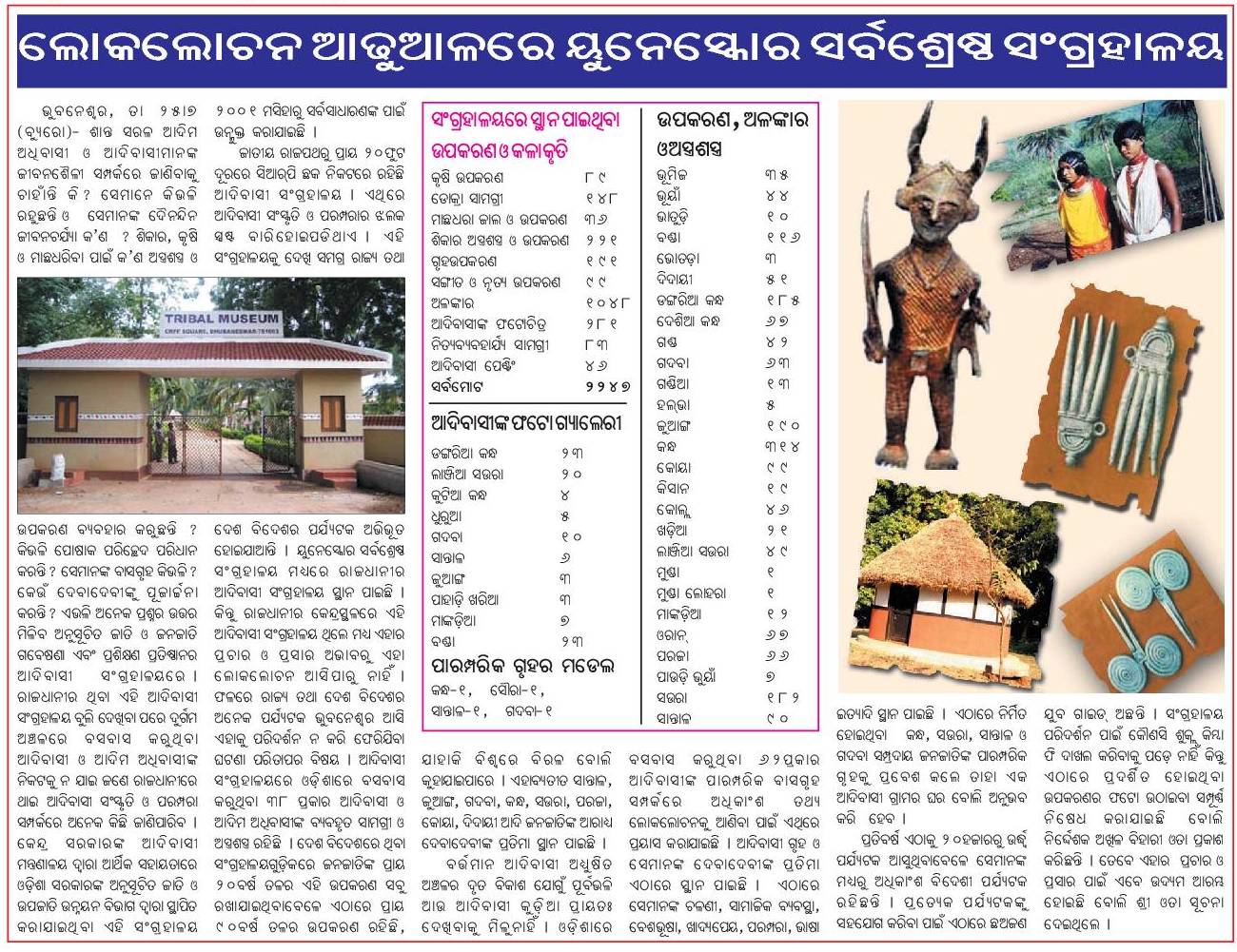Orissa Museum of Tribal Art and Artefacts in Bhubaneswar
Bhubaneswar- Cuttack- Puri, Circuit: Bhubaneswar-Chilika-Puri, Museums July 26th. 2010, 2:45pmFollowing is from Samaja.
The above article says that this tribal museum is the best museum of UNESCO. I think what it means is that UNESCO designated it the best tribal museum in India. My interpretation is supported by a 2008 news report from Telegraph. Following are some excerpts.
Orissa Museum of Tribal Art and Artefacts will soon be a little more interactive and organised, thanks to the United Nations Educational, Scientific and Cultural Organisation (Unesco) that has offered to help.
The capital’s tribal museum showcases one of the widest variety of indigenous tools, weapons, baskets, pottery, textiles, ornaments and ritual objects and was recently identified as the “best” among 21 tribal museums in India.
Unesco has offered museum authorities a chance to get more systemic with scientific documentation of every exhibit.
“We plan to mention certain facts such as the area of origin, the motive or purpose behind the item, its socio-cultural implication and the material used. Digitisation of the documents and data would make each object easier to understand,” said special officer on duty S.C. Sahoo.
… Located on the premises of Scheduled Caste and Scheduled Tribe Research and Training Institute, the archive displays objects from almost every tribe.
The Museum of Tribal Art and Artefacts currently houses about 2,247 artefacts.
There are dresses and ornaments, dokra items, musical instruments, hunting implements, fishing nets, weapons of offense and defence, agriculture tools, household objects, personal belongings, tribal art, photographs and terra cotta items in the archive.
Traditional costumes such as the ringa of the Bonda tribe, phute sari of the Santhals and gatungkap of Lanjia Saora can be seen at the museum — one of the few places that showcases such clothes.
Ornaments such as tangam of Lanjia Saora, shaska of Kutia Kondh, kunti of Juang and necklaces such as take mecodica of Dongria Kondh, puste of Koya, dabu and lubeida of the Bonda — are also a part of the unique collection.
The institute campus also houses five huts made according to Santhal, Juang, Gadaba, Saora and Kondh styles.

